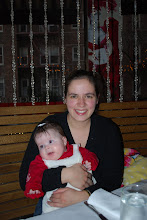That cute charming nursery you planned out in your 1 bedroom apartment, the bugaboo stroller you have been craving, all that no more! You will need space! You can no longer live in the city, and you will need a double stroller! Daycare will cost you twice as much; you may have to quit the job you love, etc.
When we found out we were going to have twins, we had a cute, spacious 1 bedroom in Queens. The bedroom was big enough for three, so we figured, before we upgraded, this will do for a while. But even though there was enough space there for 1 crib and a dresser that would double as a changing table, there was most certainly not enough space for two cribs! The double stroller would never fit into the elevator, and the car became a must (we didn’t own one at a time), to take both of them back and forth to doctor’s appointments.
Along with having twins there is a whole slew of concerns with the pregnancy: will I have to go on bed rest? Will I have to stop working earlier than I hoped? Will I be able to carry two babies to term? All of those keep swirling in your head.
First of all, here is a crash course on types of twins and the risks associated with each type:
Di/di (Dichorionic-Diamniotic): Those are the twins that have 2 gestational sacks as well as 2 placentas. This is the most common type. Chances are if you did IVF or IUI, this is the type you have. They occur if two eggs get fertilized at the time of conception. This is the safest type of twins to have, since there are the fewest risks associated with having them. Your main risk is higher chance of pre-term labor, which is common of all types of twins. Most commonly these twins are fraternal, although it is always best to do a genetic test after birth.
Mono/di (Monochorionic-diamniotic): These twins share a placenta. Usually they result from 1 egg being fertilized and then splitting. Sometimes though, it is possible for the two placentas to fuse together, which may also result in this type. Most commonly these twins are identical, but again, it is best to do a genetic test to be sure. In terms of risks, you have an added risk of your twins having a TTTS (twin-to-twin transfusion syndrome), where one twin starts getting more blood and the other one gets less, which is dangerous for both. At early stages of pregnancy this can be corrected with a laser surgery, and if your twins develop this at later stages, usually they get delivered.
Mono/Mono (Monoamniotic-monochorionic): These types of twins are the least common. The result when an egg splits too late to form a membrane. The twins share not only a placenta, but also the gestational sack. There is no membrane between them, so they run the risk of their cholds beeng wrapped around each other. Most commonly mothers with these twins are admitted to the hospital for monitoring at 24 to 28 weeks, with deliveries being scheduled earlier. This also means that there is a much higher chance of babies needing extra help when they are born, so they may end up in the NICU (neonatal intensive care unit). The twins of this type are always identical.
If you want more info on twinning and different types, please refer to wikipedia)
So this is the low-down on twins. Most importantly, do not worry! If you have twins, things end up working themselves out. There is a chance that you will have to give up some things that you know and love, but having two little babies stare at you with undying love, makes every step of the way worth it! Yes we had to give up our nice apartment in the city and move to the suburbs, buy an SUV, and my husband has to ride the train to work now 2 hours one way, but these two girls are so worth it. Every smile, every stare, every babble, we just remember how lucky we are to have two happy healthy girls.
So this is the low-down on twins. Most importantly, do not worry! If you have twins, things end up working themselves out. There is a chance that you will have to give up some things that you know and love, but having two little babies stare at you with undying love, makes every step of the way worth it! Yes we had to give up our nice apartment in the city and move to the suburbs, buy an SUV, and my husband has to ride the train to work now 2 hours one way, but these two girls are so worth it. Every smile, every stare, every babble, we just remember how lucky we are to have two happy healthy girls.




No comments:
Post a Comment